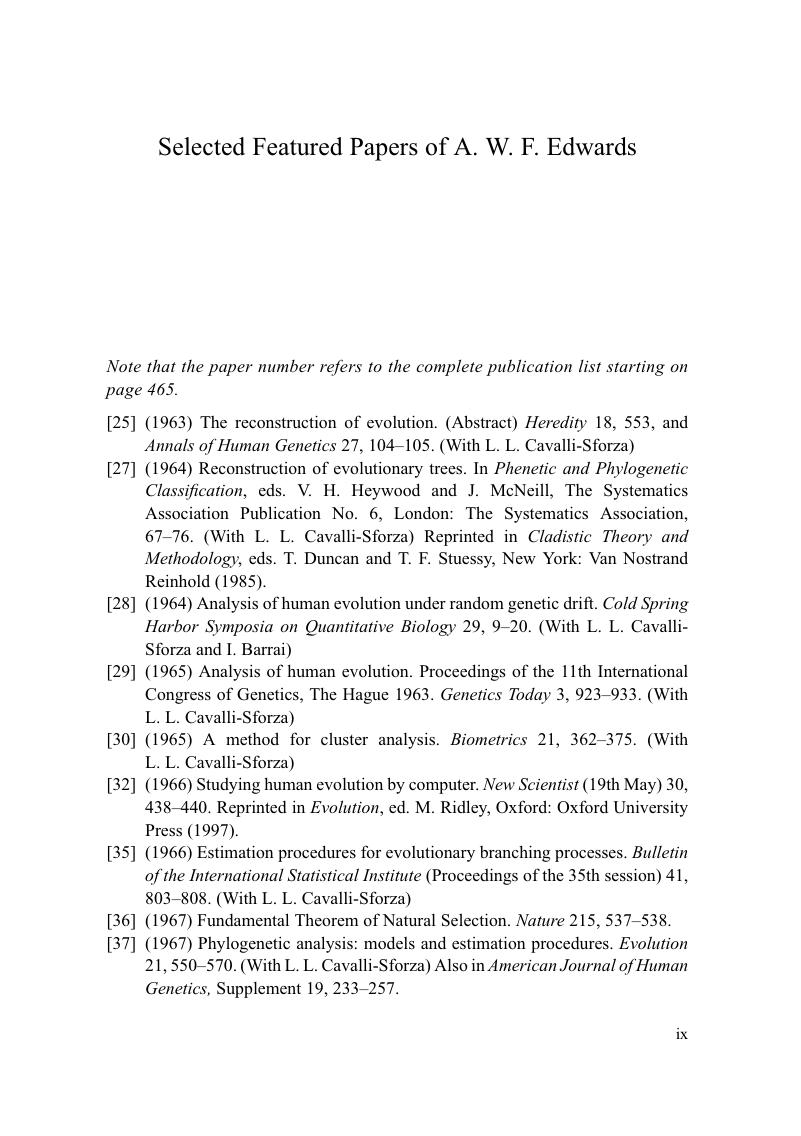 Phylogenetic Inference, Selection Theory, and History of Science
Phylogenetic Inference, Selection Theory, and History of Science Book contents
- Phylogenetic Inference, Selection Theory, and History of Science
- Frontispiece
- Phylogenetic Inference, Selection Theory, and History of Science
- Copyright page
- Contents
- Selected Featured Papers of A. W. F. Edwards
- Contributors
- Dedication
- Introduction
- Part 1 Selected Papers of A. W. F. Edwards
- Part 2 Commentaries
- Part 3 Interviews with A. W. F. Edwards
- Part 4 A. W. F. Edwards
- Book part
- Index
- References
Selected Featured Papers of A. W. F. Edwards
Published online by Cambridge University Press: 29 June 2018
- Phylogenetic Inference, Selection Theory, and History of Science
- Frontispiece
- Phylogenetic Inference, Selection Theory, and History of Science
- Copyright page
- Contents
- Selected Featured Papers of A. W. F. Edwards
- Contributors
- Dedication
- Introduction
- Part 1 Selected Papers of A. W. F. Edwards
- Part 2 Commentaries
- Part 3 Interviews with A. W. F. Edwards
- Part 4 A. W. F. Edwards
- Book part
- Index
- References
Summary

- Type
- Chapter
- Information
- Phylogenetic Inference, Selection Theory, and History of ScienceSelected Papers of A. W. F. Edwards with Commentaries, pp. ix - xPublisher: Cambridge University PressPrint publication year: 2018


